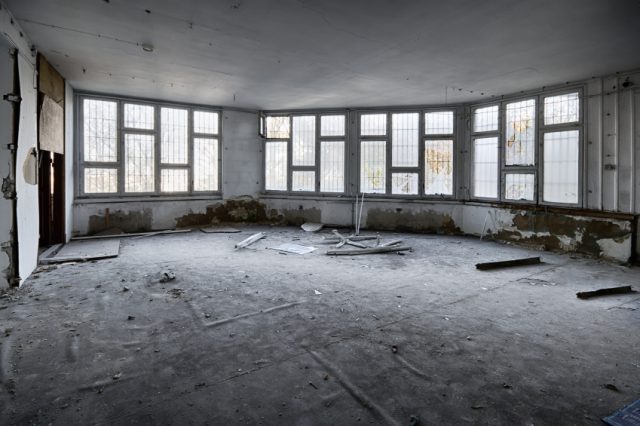Homeowners who plan to let out their property as a method of avoiding the negative housing market may be surprised at how difficult is to become a landlord.
Within the tough rental sector, only the top properties are letting quickly, and these so-called accidental landlords can expect lengthy and costly void periods.
Tim Hyatt, Head of Residential Lettings at Knight Frank, says: “Contrary to what people might think, the lettings market is not busy across the board. As a landlord, you have to be totally flexible and you need to treat the property as you would an investment property; it must be well-priced, neutrally decorated, and ready for someone to move into straight away.”
It is not the first time that accidental landlords have appeared on the private rentals sector, however the number has increased drastically in the last year.
A Director of Savills Private Finance, Melanie Bien, explains: “The stagnant housing market is making it virtually impossible for many people to sell; at least at prices they are happy with.”
This rise in supply has not been met with such an increase of demand, however, as the number of tenants is growing, but at a slower rate.
Richard Price, Director of Operations at the National Landlords Association (NLA), sees the influx of accidental landlords continuing. “It is likely that if property prices keep falling, we will see more people choosing to hold on to their asset and let their property rather than sell it,” he says.1
The lettings industry is now hugely competitive, thanks to the accidental landlords. Hyatt notes: “Stock levels in many offices are up 100% over the past 12 months, while in some offices levels are three times as high as they were at this time last year.”
Jane Ingram is the Head of Lettings at Savills, and says this pattern has been seen in letting agencies also. “They are significantly higher than a year ago, with the number of properties doubling, if not trebling; partly due to the rise in accidental landlords coming new to the market,” she says.1
Hyatt adds: “At the top end of the London market, there is a huge variety of stock for people to look at, so this is a highly competitive market. In some areas, landlords are having to look at rent reductions of 20% to 40% per week.”

Accidental Landlords Facing Difficulties
Letting out a home in this market is not as easy as it may seem. Professional landlords are aware of the type of properties that are in demand in particular areas, but accidental landlords do not have this choice.
Website PropertyFinder has said that, “landlords who have not had the power to choose an appropriate property will find it difficult to cover their costs.”1
But this does not mean that renting out your residential property is not a good option. By researching the market, it is possible to find out what type of house is in demand and what rates they are going for. Hyatt says: “Take the advice of your local letting agent.
“I say this all the time but no one listens: ask your agent for some examples of properties that will let overnight and then compare them to your own. If your property does not match up, you should prepare for long void periods.
“Accidental landlords are people who are renting out private homes decorated to personal taste. These properties may not be idea for the rental market.
“You need to ask yourself if you are prepared to make the necessary investment in the property, and whether you are prepared to refinance in order to make that investment. If not, you may struggle.”1
Homeowners entering the industry must also be aware of rental arrears. “For the highly geared landlord whose monthly mortgage payments rely heavily on monthly rental income, tenants not paying can quickly spell disaster,” says the NLA’s Simon Gordon.1
Some mortgage lenders do provide buy-to-let loans to landlords with a 25% deposit; however experts advise having a larger share in order to make money.
Liam Bailey, Head of Residential Research at Knight Frank, says: “The only landlords who are going to make lets work over the next couple of years are those with a decent slab of equity in their property, around 40%.”1
If renting out your home is still an appealing option, the first step should be to notify your mortgage provider. Bien says: “If you fail to do this, you are in breach of the mortgage contrast.
“Theoretically, if the lender finds out, it could insist that you repay the mortgage because you have broken that contract.”
The mortgage lender may permit you to stay on your existing mortgage for a certain length of time before you change to a buy-to-let arrangement. You could be required to switch straightaway. “If you have to switch to a buy-to-let deal straight away, this may be problematic because there are few deals available, and both rates and fees are high,” explains Bien.1
As well as getting permission for the mortgage company, your household insurer will need to be informed. Also, if you plan to offer your property furnished, you should look into specialist landlord insurance.
There are many rules and regulations associated with being a landlord. It is advised that you join a landlord’s association to remain up-to-date on any changes. They may also offer discounts on services, for example, landlord’s insurance. It will cost around £70 a year to join.
It is a necessity for landlord’s to produce an Energy Performance Certificate (EPC) for tenants to examine. EPCs do last for ten years, however. Deposits must be placed in a deposit scheme, such as the Deposit Protection Service, or the Tenancy Deposit Scheme.
Landlords with Houses in Multiple Occupation (HMOs) are required to have a licence from the local housing authority.
1 http://www.telegraph.co.uk/finance/personalfinance/investing/4269824/Buy-to-let-Warning-for-accidental-landlords.html







